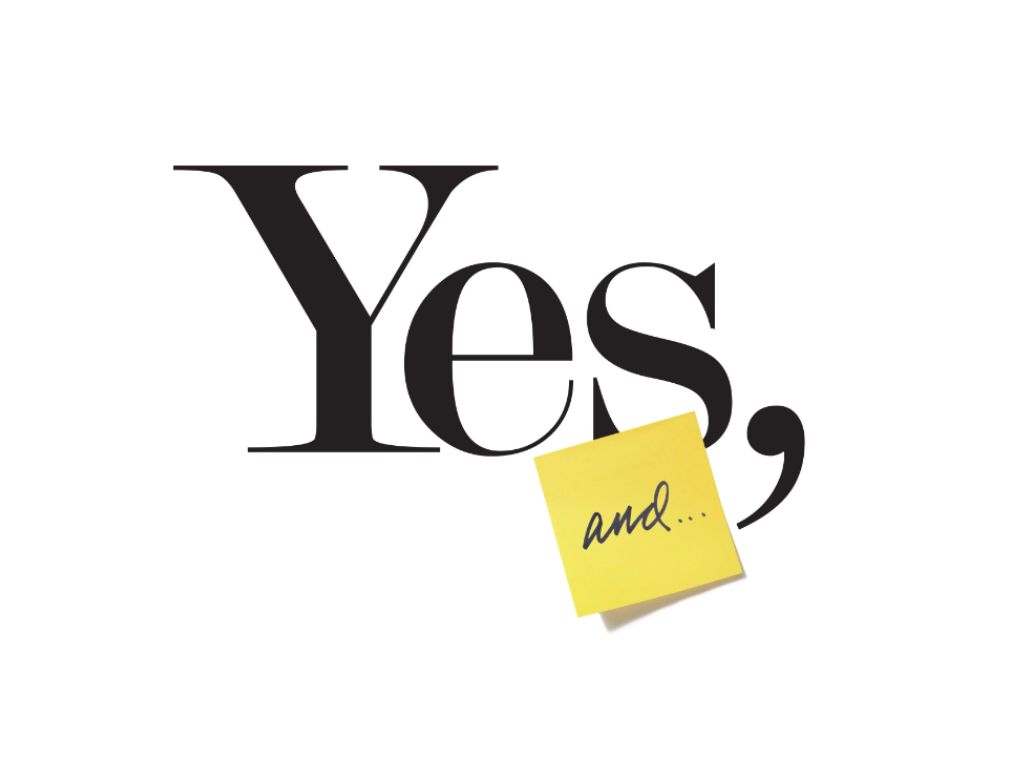
4 minute read
Shoptalk: The Habit of 'Yes'
By Kevin J. Costa, Ph.D.
We laugh a lot. We let our imaginations run wild. We follow our impulses. And we are messy. This is powerful learning at work on a typical day in my improv theater class, and it may just be the very best preparation for life. At McDonogh School we call this: LifeReady.
Improv theater has a long history in the United States. Inspired by classical improv forms, improv as we know it gathered steam in 1950s Chicago and readily spread around the nation. Now, in many cities and communities, you’ll find stages with troupes that perform regularly. It’s no surprise why improv is enormously addictive. And if you get a real laugh, you’re hooked for life.
When I began teaching at McDonogh 20 years ago, I offered an improv theater class, and I have been teaching that class, off and on, to scores of students ever since. Improv is serious stuff when you “look under the hood.” In every improv exercise, short and long, actors must bring their bodies and minds into a scene that has not been written. Newcomers to the art form are often baffled that something that never existed before the moment of its creation can be so good, so funny, so moving.
So, how is it done? The short answer is that there are a few widely-held practices and guidelines that improvisers learn and develop. The most famous commitment is to say ‘yes, and!’ whenever another actor says something—or “makes an offer.” One actor might say, “Wow, what a beautiful sunset,” to which her partner might reply, “Yes, dear, and after such a terrible storm.” Already, in this seemingly ordinary exchange, a scene is taking shape. There was a storm. There is a beautiful sunset. One character calls the other “dear.” What’s it about? No one—actors and audience members—knows, but it is riveting. If the actors continue accepting the reality of the scene and build on each offer, incredible storytelling happens.
Improv also demands concentration and deep listening, which compels the actors to watch how another person communicates in words and action. As an ensemble, they must collaborate vigorously, use their knowledge of the world to draw on-the-spot inspiration, and take on different perspectives and points of view. One of the best outcomes is that the art form helps them self-regulate and be keenly attuned to their feelings and the feelings of others.

The core competencies of improv, from concentration to communication and collaboration, are critical skills and habits people need in almost any walk of life. It’s that kind of preparation LifeReady promises.
As illustrated by our LifeReady “Wheel,” the McDonogh student—the LifeReady learner—is the focal point of every subject and lesson plan. The outer ring, liberal arts and sciences, refers to the time-tested curriculum that offers breadth and depth in essential fields, including English, math, history, fine and performing arts, science, and world language. The six categories that bridge curriculum and the LifeReady Learner are the core competencies McDonogh strives to develop—over time and across grade levels and subjects—through a variety of teaching methods.
In improv, these methods encompass movement, handson exercises, reflective activities, and showcase design. In math, the vocabulary may be modeling and predicting, while in English, it might be reading comprehension and developing evidence-based written and oral arguments. In other words, the same “curriculum-competency learner” principles apply across subjects, but the specific terms and methods depend on the field. Teachers guide students to create work using the approaches that fit their subject area. Regardless of the discipline, the critical element that lends itself to deep understanding is the requirement that students think for themselves. The good news is that in every discipline, such cognitively active work often simultaneously develops social and relational habits as students gain knowledge in the field. An improv actor, for instance, could never truly “get it” without actually standing on the stage and generating a piece of theater in the moment.
It’s hardly a surprise that improv is popping up in programs far afield from theater. At Johns Hopkins University, the Carey School of Business offers a course called “Organization Improv” where students adapt improv tenets to develop leadership skills, and the University of Pittsburgh’s Law School offers “Applied Improv for Lawyers.” A simple Google search will uncover similar programs at other institutions.
LifeReady was designed in response to a world of rapid change, ambiguity, volatility, and uncertainty. If we don’t have the confidence to improvise, we may find ourselves wholly unprepared for even the simple things of life.






